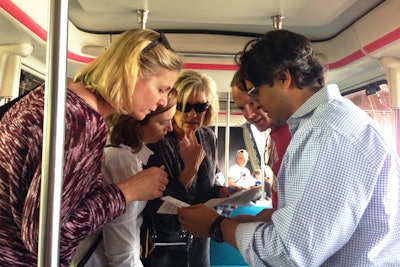
Adventure Associates' “GeoTrek” activity is based on the recreational sport of geocaching—using GPS devices to locate containers, known as “caches.” The company has courses in 75 locations around the country, including one at Walt Disney World that requires participants to use the monorail, boats, and walking between resorts to locate each cache. Organizers provide a brief lesson on how to use GPS, and then teams of about four people each choose which caches they will attempt to locate based on point values, distances, and strategy. When teams reconvene, the company’s facilitators can lead participants in a discussion of what they learned followed by a tallying of each team’s scores.
Photo: Courtesy of Adventure Associates
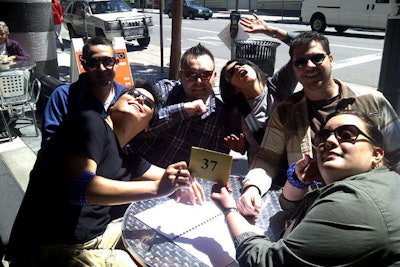
Smartphone cameras drive the fun in Corporate Games Team Building's Paparazzi game. Organizers divide participants into groups of about eight people each and give them a list of photographs and a bag of costumes and props. Teams then have a set amount of time to travel around a venue or within a designated part of the city, to capture as many of the photos as possible. Examples include a photo of team members posing as celebrities dining alfresco or a photo of team members hosting a cooking show. Organizers score the photos as they come in and put them into a slide show which can be viewed by everyone at the end of the event.
Photo: Courtesy of Corporate Games Team Building
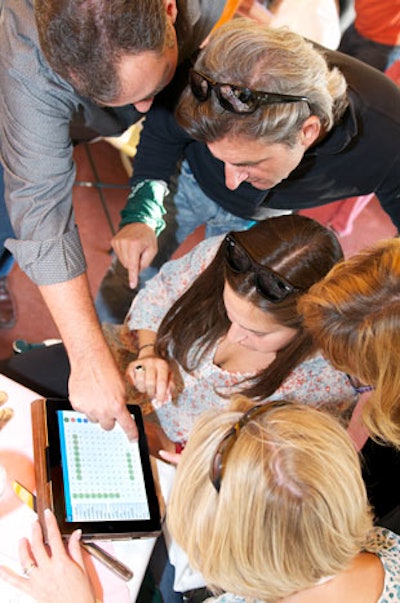
Classic game shows get a new twist in Wildly Different's iPlay event. The company provides iPads that teams use to complete challenges modeled after traditional game show activities. In “Survey Says,” participants must rank the answers provided from most popular to least popular in categories such as “top-selling candy bars” and “favorite pastimes.” In “What’s the Tune,” players hear snippets of music and must name the song or artist. The iPads automatically tally each team’s points, and at the end members of the winning team join the M.C. on stage to receive their awards.
Photo: Courtesy of Wildly Different
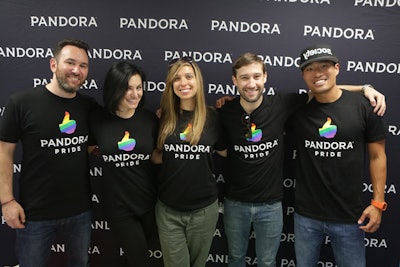
Pandora employees volunteered with the Ally Coalition last month at the Los Angeles L.G.B.T. Center.
Photo: Courtesy of Pandora
Alcoholic Architecture
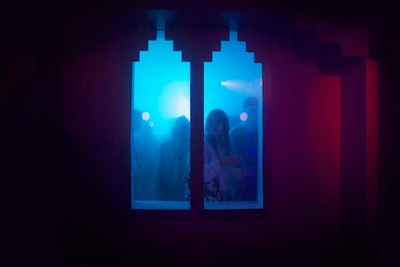
London-based culinary duo Sam Bompas and Harry Parr debuted their latest project, Alcoholic Architecture, in July. The concept features a breathable cocktail cloud composed of fine spirits and mixers at a ratio of one to three, made using powerful humidifiers to super-saturate the air. Alcohol enters the bloodstream through the body’s mucus membranes: primarily the lungs but also the eyeballs. By "breathing" the cocktail, alcohol bypasses the liver, allowing guests to consume 40 percent less to feel the same effect, plus the high humidity level enhances the flavor.
Photo: Ann Charlott Ommedal

Following the Streamy awards in September, digital media company Fullscreen hosted a neon-colored after-party in Los Angeles, partnering with Caravents on the production and digital strategy. The fete was intended to create a space where the Web content-creating millennial and Gen Z attendees would feel motivated to share in authentic ways. One detail ripe for sharing was a collection of small animal objects placed throughout the space along with the hashtag #EmojisintheWild.
Photo: Paige Jones
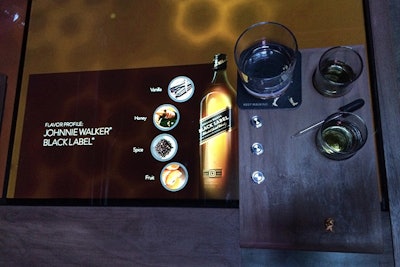
Johnnie Walker hosted its House of Walker tasting and education events last fall in Austin, Texas. As they arrived, all social media influencer guests received cards embedded with R.F.I.D. tags that allowed them tastes at each of the six stations. Guests could link their cards to their social accounts to enable easy sharing, and a highly visual and personal welcome message appeared when guests put their cards into designated slots at the tasting mats.
Photo: Nadia Chaudhury/BizBash
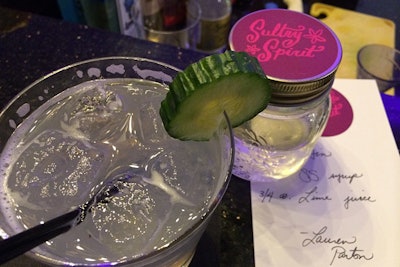
In February 2014, W Chicago City Center hosted a Valentine's Day event for bloggers and other media. Given the event celebrated the romantic holiday, the property’s in-house mixologist, Lauren Parton, created personalized love potions at the bar, after inquiring about their cocktail preferences. She also wrote down the recipe, and sent guests home with jars of their potions printed with cheeky labels.
Photo: Jenny Berg/BizBash
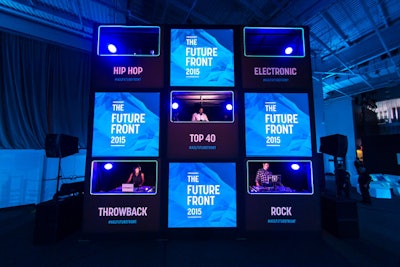
The event's focal installation was a three-story DJ tower that housed five DJs in cubes playing hip-hop, electronic, Top 40, rock, and throwback. Built with scaffolding, the tower featured shifting light, music, and video styles and allowed DJs to play solo sets, participate in music battles, and combine genres. Four of the squares projected video that showed social feeds, DJ information, and live shots of the DJs performing.
Photo: Pearcey Proper


















